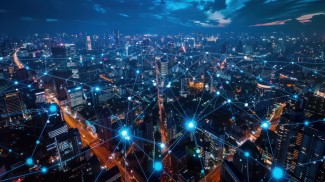Integrating artificial intelligence (AI) into the energy sector offers promising avenues for accelerating the clean energy transition. Our recent workshop showcased AI’s vast potential and highlighted critical areas where energy efficiency expertise remains indispensable.
Over the past two years, the landscape of generative artificial intelligence (GenAI) has dramatically evolved, showing remarkable growth in capabilities that could significantly influence the clean energy transition. GenAI offers promising solutions for complex grid optimization problems, which it could help solve by dynamically balancing energy supply with demand and maximizing the potential of renewable energy sources.
GenAI pushes the boundaries of what we’ve traditionally considered "smart" technology, potentially transforming thermostats, devices, and entire buildings to bridge the gap between technological capabilities and real-life human needs. Additionally, it could drastically reduce waste across manufacturing, transportation, and other sectors. However, GenAI's intensive energy demands pose significant challenges to achieving national and corporate greenhouse gas (GHG) reduction goals.
During ACEEE’s Summer Study on Energy Efficiency in Buildings this past August, we held an engaging workshop focused on AI's potential in the buildings sector. The session sparked essential discussions on how to balance AI's technological advancements with practical energy efficiency measures and sustainable practices.
AI’s capabilities can significantly enhance building operations, automate and optimize architectural design processes, and improve the efficiency of energy audits. This could lead to a substantial reduction in energy consumption and carbon emissions. At the workshop, Nan Zhou of the Lawrence Berkeley National Laboratory presented her recent research, which estimates that AI could help reduce energy consumption and building emissions by 8–19%. Her examples included automating time-consuming tasks for architects, using robotics to minimize construction waste, improving building operations through advanced fault detection, and accelerating energy audits with machine learning, thereby reducing costs.
The use of AI, particularly in machine learning and automation, is familiar to the buildings sector. These technologies have been used for years to manage loads, control heat pumps via smart thermostats, and balance supply and demand on the grid. However, GenAI's capabilities have expanded dramatically over the past two years, presenting even greater opportunities for innovation.
Workshop participants discussed various high-potential applications of AI in energy management, automation, and system optimization. We explored how chatbots could assist homeowners with making informed electrification choices based on their specific home energy systems, needs, and conditions. If utilities could access extensive datasets reflecting homeowner choices, they could better identify and offer the most sought-after solutions. We also discussed how GenAI could educate building owners and managers about their energy systems, aiding them in deciding which technologies to install and when.
Machine-learning algorithms can run multidimensional models that support sophisticated energy management and control strategies. This might include capturing waste heat for reuse in industrial processes, providing building operators and service providers with enhanced data-processing capabilities to better understand the interactive variables in a building, or using AI to analyze images that help modelers and utilities better understand building characteristics and make more informed design decisions. Grid managers might employ GenAI to swiftly locate available demand-side resources and find optimal solutions based on grid capacity, enhancing efficiency.
Despite these promising applications, significant challenges and limitations remain. Financial constraints, biased training data, and interoperability issues could all impede the effective deployment of AI technologies. Moreover, the massive energy requirements of data centers supporting GenAI are a considerable concern, as they are far more energy-intensive than traditional data centers. These centers are typically located at U.S. Internet fiber telecommunications network nodes, which intersect with the electricity grid. This geographical overlap creates both opportunities and complications, particularly in regions where industrial facilities are also concentrated.
Participants emphasized the need for continuous monitoring and improvement of the AI training data, integrating cost considerations into AI models, and addressing connectivity issues through proprietary APIs that can complicate operations.
There is reason for both caution and optimism in this rapidly changing landscape. GenAI opens new possibilities, accelerating tasks like sorting images and data, synthesizing information, and identifying patterns or trends. It enables individuals without coding, data-processing, or modeling experience to develop creative solutions using AI-assisted tools.
As we continue to explore these technologies, ACEEE is committed to leading discussions on the efficient and ethical use of AI in energy management. We aim to find the sweet spot between AI's challenges and opportunities, focusing on the critical efficiency aspects of AI hardware, algorithms, and data centers.
To advance AI’s role in building and energy efficiency, we propose several steps:
- Illustrate the costs and value propositions of AI applications
- Develop frameworks to guide decision-making in AI adoption
- Engage venture capitalists involved with AI development
- Incentivize the installation of AI-ready hardware to accelerate the adoption of advanced smart building solutions as the technology matures
Our aim is to balance AI's economic and environmental impacts, leveraging its benefits while addressing its energy demands. Those interested in joining this initiative should visit our new AI web page, fill out the signup form, and be part of exploring collaboration opportunities.




